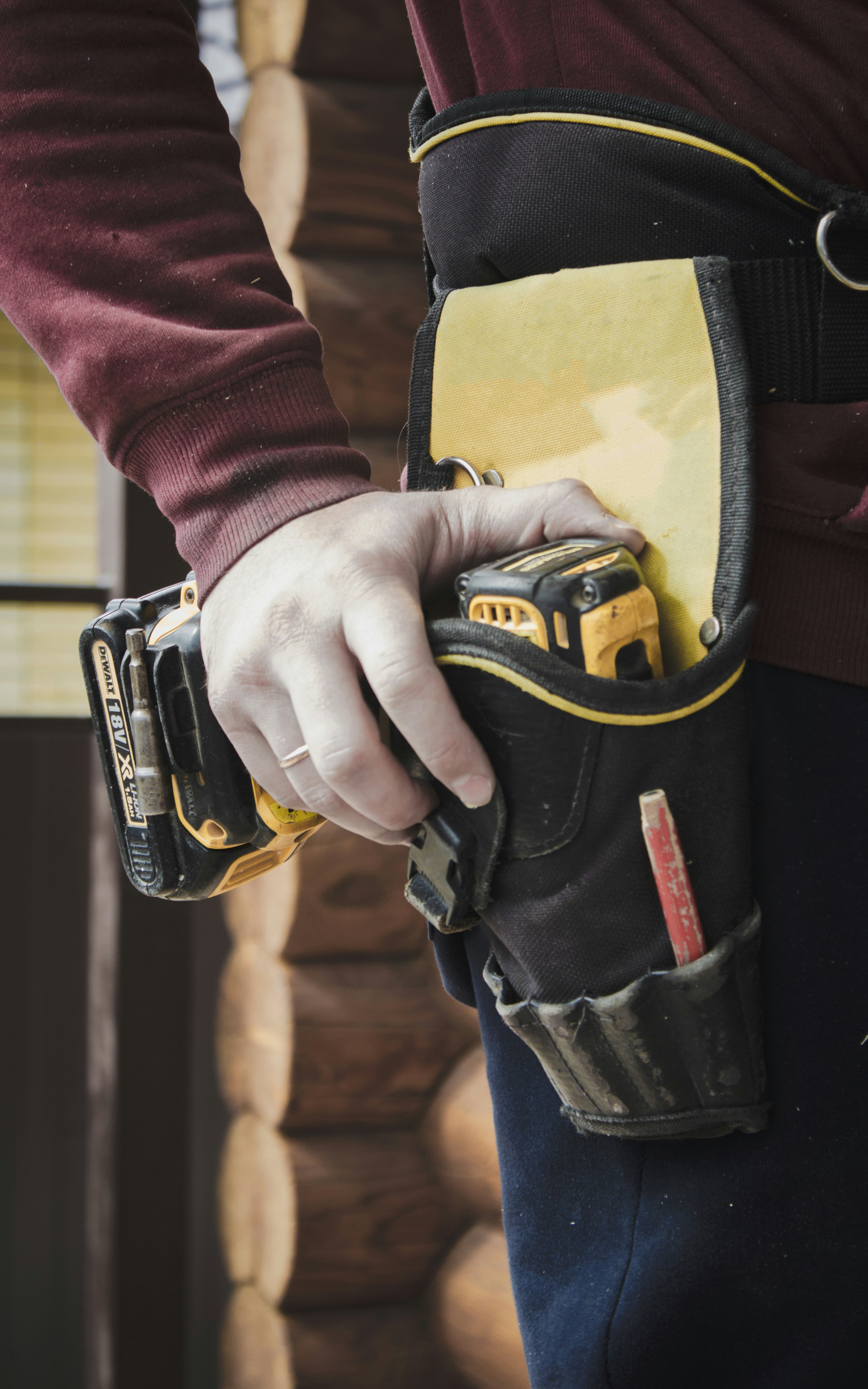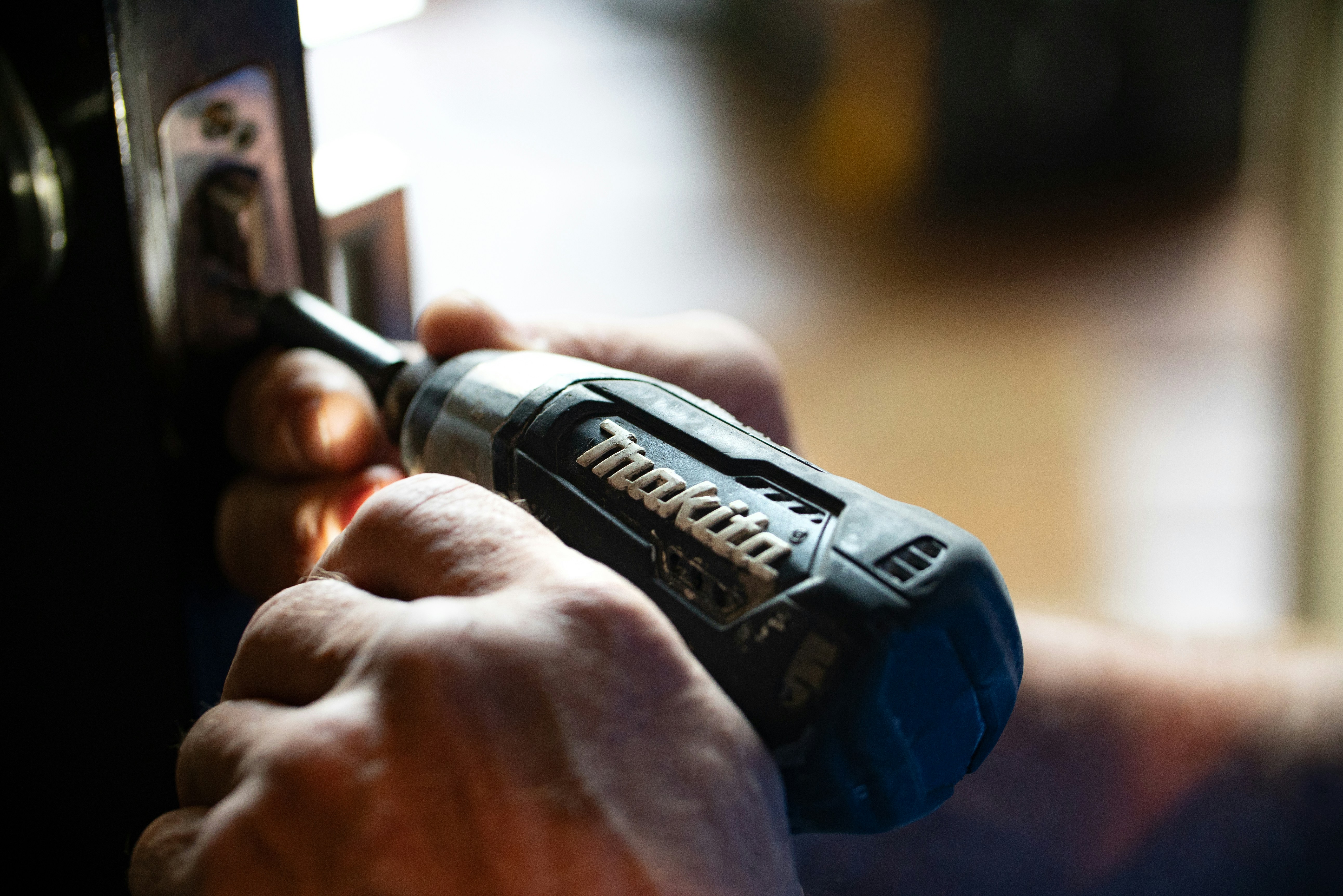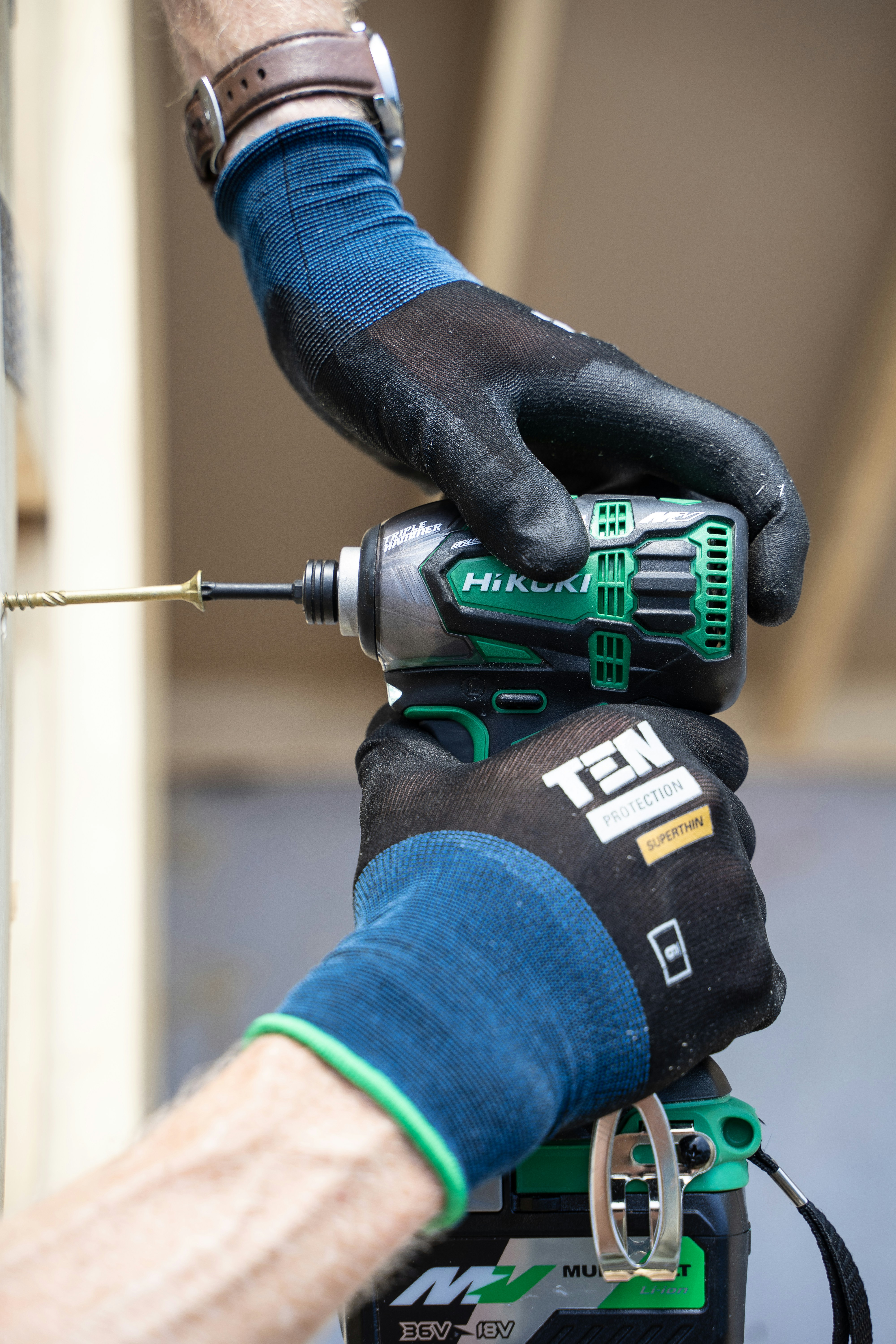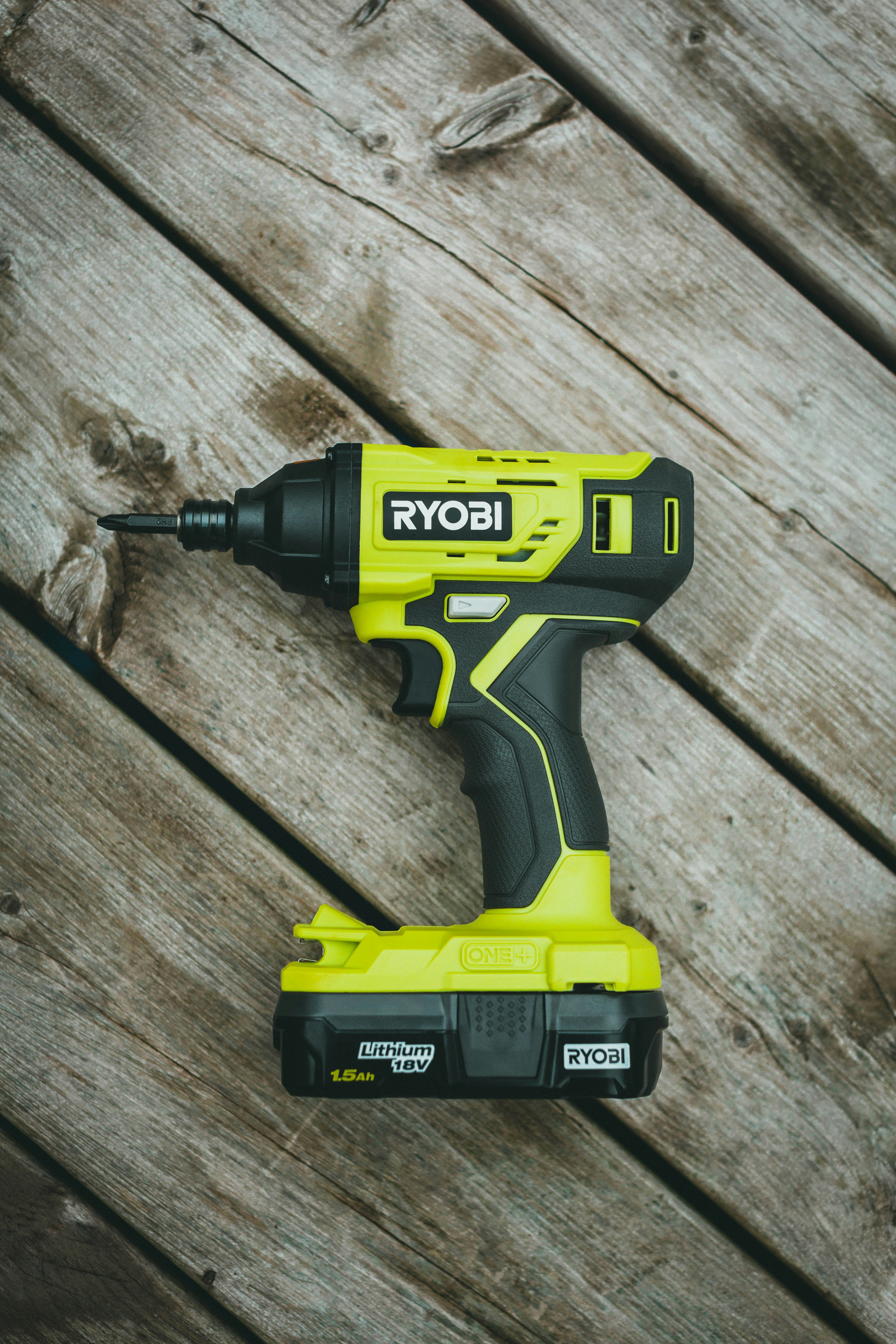Impact Driver vs Drill: The Numbers Behind the Noise

Here's what actually happens: An impact driver delivers 1,800 inch-pounds of torque in rapid bursts. A drill delivers maybe 600 inch-pounds in smooth rotation. Yet the drill strips screw heads while the impact driver doesn't. The physics explanation involves rotational hammering at 3,600 impacts per minute, but the practical reality is simpler - they're solving different problems with different methods.
The confusion starts at the store display. Both tools look nearly identical. Both accept hex bits (though drills also take round shanks). Both drive screws. Both drill holes. The price tags show similar numbers. But pickup a contractor's belt and you'll find both tools, because at 7 AM on a job site, using the wrong one costs time and stripped fasteners.
The market data tells the real story. Impact driver sales grew 340% from 2015 to 2025, while drill sales stayed flat. Home Depot's purchase data shows contractors buy them in pairs - same brand, same battery system, complementary purposes. The DIY market took longer to catch on. Google Trends shows "impact driver vs drill" searches peaked in 2023, eight years after contractors made them standard equipment.
The Mechanical Reality - How They Actually Work

A drill operates through continuous rotation. The motor spins, gears reduce speed while multiplying torque, and the chuck grips the bit. Squeeze the trigger harder, it spins faster. The torque stays relatively constant until the motor stalls. Simple mechanical transfer from motor to bit.
Impact drivers add a spring-loaded hammer mechanism. The motor spins a spring-loaded hammer that strikes an anvil attached to the output shaft. When resistance increases, the hammer disengages, springs back, and strikes again. This happens 3,000-4,000 times per minute. Each impact delivers significantly more torque than continuous rotation could achieve from the same motor.
The numbers reveal the difference. A typical 18V drill produces 500-600 inch-pounds of torque through gearing. An 18V impact driver using the same battery and similar motor size produces 1,400-1,800 inch-pounds through impact action. The percussive force explains why impact drivers sound like machine guns while drills just whir.
Torque Delivery Patterns - The Data
Laboratory testing shows distinct torque curves. Drills deliver consistent torque from start to finish, ramping up smoothly as trigger pressure increases. The torque graph looks like a steady climb to a plateau.
Impact drivers show a sawtooth pattern. Torque spikes with each impact, dropping to near zero between strikes. The average torque appears lower on paper, but the peak forces exceed what drills can produce. It's the difference between pushing a car steadily versus hitting it repeatedly with a hammer - the impacts move things that steady pressure won't.
| Tool Type | Continuous Torque | Peak Torque | Delivery Pattern | Impacts/Minute |
|---|---|---|---|---|
| 12V Drill | 200-250 in-lbs | 250 in-lbs | Continuous | 0 |
| 12V Impact | 100 in-lbs average | 1,000 in-lbs | Pulsed | 3,200 |
| 18V Drill | 400-500 in-lbs | 500 in-lbs | Continuous | 0 |
| 18V Impact | 200 in-lbs average | 1,500 in-lbs | Pulsed | 3,400 |
| 20V Drill | 500-600 in-lbs | 600 in-lbs | Continuous | 0 |
| 20V Impact | 250 in-lbs average | 1,800 in-lbs | Pulsed | 3,600 |
| 24V Drill | 650-750 in-lbs | 750 in-lbs | Continuous | 0 |
| 24V Impact | 300 in-lbs average | 2,200 in-lbs | Pulsed | 3,900 |
Speed Differences and Control
Drills typically offer variable speed from 0-450 RPM in low gear and 0-1,500 RPM in high gear. The speed varies smoothly with trigger pressure. Full trigger equals maximum RPM. The control feels linear and predictable.
Impact drivers run faster - usually 0-2,500 to 3,500 RPM. But the speed control works differently. Light trigger pressure maintains steady rotation without impact action. Increased resistance or trigger pressure engages the impact mechanism. The transition from rotation to impact isn't always predictable.
The clutch difference matters too. Drills include adjustable clutches with 15-24 settings plus a drill mode. Each number represents a torque limit where the clutch disengages. Setting 1 might release at 40 inch-pounds, setting 20 at 400 inch-pounds. This prevents overdriving screws or stripping threads.
Impact drivers have no clutch. They stop when you release the trigger or the battery dies. The impact mechanism provides some natural limiting - once a screw seats, the impacts just bounce off rather than continuing to drive. But there's no precision control.
Bit Holding Systems - Chuck vs Hex

Drills use three-jaw chucks that accept round and hex shanks from 1/16" to 1/2" (or 13mm). Keyless chucks dominate the market now - twist to tighten, twist to loosen. The friction fit works for most applications but can slip under high torque.
Impact drivers use 1/4" hex collets exclusively. Pull the collar forward, insert the bit, release. The ball detent or ring mechanism locks bits in place. No slippage, no retightening, but also no flexibility in shank sizes.
This fundamental difference drives accessory choices. Drill bits traditionally come with round shanks. Impact-rated bits need hex shanks plus reinforced construction to handle the hammering. A standard Phillips bit might last 50 screws in an impact driver. An impact-rated bit handles 500.
The market responded predictably. Impact-rated accessories now dominate hardware store displays. Milwaukee's Shockwave line, DeWalt's Impact Ready bits, Makita's Impact Gold series - all engineered for the percussive forces. The metallurgy differs, the heat treatment differs, even the geometry gets optimized for impact loading.
Noise Levels - Measured Reality
Sound meters reveal significant differences. A drill running at full speed measures 75-85 decibels. An impact driver in full impact mode hits 95-105 decibels. That's the difference between a garbage disposal and a chainsaw.
The frequency matters too. Drills produce steady noise in the 1,000-4,000 Hz range. Impact drivers create sharp peaks at 2,000-8,000 Hz with each impact. Human ears perceive the impact driver as significantly louder even when average decibel levels are similar.
| Tool | Idle | Full Speed No Load | Under Load | Peak Impact |
|---|---|---|---|---|
| 18V Drill | 45 dB | 78 dB | 82 dB | N/A |
| 18V Impact | 45 dB | 85 dB | 96 dB | 105 dB |
| 20V Drill | 46 dB | 80 dB | 84 dB | N/A |
| 20V Impact | 46 dB | 87 dB | 98 dB | 108 dB |
| Corded Drill | 48 dB | 82 dB | 86 dB | N/A |
| Pneumatic Impact | 52 dB | 92 dB | 104 dB | 115 dB |
OSHA requires hearing protection above 85 decibels for extended exposure. Impact drivers exceed this threshold consistently. Drills occasionally reach it under heavy load. The job site reality: everyone wears ear protection when impact drivers come out.
Battery Consumption Patterns
Power draw tells another story. Drills consume steady current proportional to load. Driving a 3-inch screw might pull 15 amps continuously for 3 seconds. Total energy: 45 amp-seconds.
Impact drivers pulse their power draw. The same 3-inch screw might pull 25 amps for 0.5 seconds of rotation, then pulse at 30 amps for 1 second of impacts. Total energy: 42.5 amp-seconds. Similar total consumption, but the delivery pattern differs.
Battery manufacturers optimize cells differently for each tool type. Drill-focused packs emphasize sustained current delivery. Impact-focused packs handle high pulse currents better. Most modern packs split the difference, which explains why tool manufacturers push single battery platforms.
Runtime testing shows surprising results:
| Test | 18V Drill (5.0Ah) | 18V Impact (5.0Ah) |
|---|---|---|
| 1" screws into pine | 485 screws | 612 screws |
| 2" screws into pine | 234 screws | 289 screws |
| 3" screws into pine | 156 screws | 201 screws |
| 1/4" pilot holes | 389 holes | 247 holes |
| 1/2" spade bit holes | 87 holes | Not tested |
| Concrete screws | 67 screws | 143 screws |
Application Overlap and Separation
The Venn diagram of drill and impact driver capabilities shows significant overlap with distinct exclusive zones. Both drive screws from #4 to #14. Both drill pilot holes under 1/4". Both handle light fastening in soft materials.
Drills exclusively handle: holes over 1/2", precision clutch work, traditional drill bits, mixing attachments, and delicate materials where impact forces cause damage.
Impact drivers exclusively handle: lag bolts over 1/4", seized or rusted fasteners, concrete screws without pilot holes (using appropriate bits), and repetitive high-torque fastening.
Professional purchase patterns confirm the separation. Electrical contractors buy 3:1 impact drivers to drills. Carpenters run 2:1. Plumbers favor drills 2:1 for the hole-cutting capability. Cabinet makers might own only drills for the precision control.
Weight and Ergonomics - Measured Differences
Scale measurements reveal consistent patterns. Impact drivers weigh 20-30% less than comparable drills. The compact impact mechanism takes less space than a drill's gearbox and chuck assembly.
| Tool Model | Weight with Battery | Length | Head Diameter |
|---|---|---|---|
| DeWalt 20V Drill (DCD791) | 3.4 lbs | 7.2" | 2.0" |
| DeWalt 20V Impact (DCF887) | 2.8 lbs | 5.3" | 2.1" |
| Milwaukee M18 Drill | 3.9 lbs | 7.6" | 2.1" |
| Milwaukee M18 Impact | 3.1 lbs | 5.7" | 2.1" |
| Makita 18V Drill | 3.8 lbs | 7.5" | 2.0" |
| Makita 18V Impact | 2.6 lbs | 5.0" | 2.2" |
| Ryobi 18V Drill | 3.7 lbs | 7.7" | 2.1" |
| Ryobi 18V Impact | 3.0 lbs | 5.5" | 2.0" |
The length difference matters more than weight in practice. Impact drivers fit into joist spaces where drills won't. The shorter length reduces wrist strain during overhead work. Professional installers driving hundreds of screws daily report significantly less fatigue with impact drivers.
Precision and Control Capabilities
Torque control testing reveals fundamental differences. Set a drill's clutch to setting 5 and drive 100 screws - they'll all seat at nearly identical depths. The mechanical clutch provides repeatable results.
Impact drivers rely on user timing. Release the trigger when the screw looks right. Professional users develop muscle memory for this timing. New users consistently overdrive or underdrive fasteners. The learning curve data from vocational schools shows 20-30 hours of practice before consistent results.
Speed control follows similar patterns. Drills maintain selected speeds regardless of load (until stalling). Impact drivers vary speed based on resistance. This makes drills superior for hole cutting where consistent speed prevents bit damage and improves hole quality.
Cost Analysis - Market Pricing Reality
Retail pricing data from major outlets shows impact drivers cost 10-20% more than equivalent drills when purchased individually. But combination kits tell a different story. A drill-only kit might cost $149. An impact-only kit runs $159. The combination kit sells for $199.
The math pushes consumers toward both tools. Manufacturers structure pricing to sell complete systems rather than individual tools. Battery and charger costs reinforce this - buying separately costs 40-50% more than kit pricing.
| Configuration | Home Depot | Lowe's | Amazon | Average |
|---|---|---|---|---|
| 18V Drill Kit | $149 | $139 | $129 | $139 |
| 18V Impact Kit | $159 | $149 | $139 | $149 |
| Combo Kit | $199 | $189 | $179 | $189 |
| Drill Bare Tool | $79 | $69 | $59 | $69 |
| Impact Bare Tool | $89 | $79 | $69 | $79 |
| 5.0Ah Battery | $79 | $79 | $69 | $76 |
| Charger | $39 | $39 | $29 | $36 |
Bit and Accessory Requirements
The accessory cost difference adds up. Standard drill bits work in both tools with hex adapters. But optimal performance requires tool-specific accessories.
A 29-piece titanium drill bit set costs $30-50. The same set in impact-rated construction runs $50-80. Individual impact bits cost 2-3x standard bits. A basic Phillips bit might cost $0.50. The impact-rated version runs $1.50.
The durability difference justifies the cost for professionals. Testing shows standard bits in impact drivers last 10-20% as long as impact-rated versions. The torsional zones built into impact bits absorb shock, preventing premature failure.
The Evolution of Market Categories
Historical sales data reveals market evolution. Before 2010, impact drivers were specialty tools for mechanics and industrial applications. The cordless revolution changed everything. Lithium batteries provided power density for effective cordless impacts. Prices dropped below $200. Suddenly contractors could afford them.
The terminology evolved too. "Impact wrench" meant pneumatic tools for automotive work. "Impact driver" emerged to describe the smaller, hex-collet versions for construction. Marketing departments pushed "driver" to differentiate from the heavier automotive tools.
Patent filings show the innovation race. Milwaukee's hydraulic impact technology (2017) promised quieter operation. DeWalt's precision drive mode (2019) added control to impacts. Makita's assist mode (2020) automatically adjusts impact timing. Each manufacturer chases the perfect combination of power and control.
Professional Usage Patterns

Time-motion studies from construction sites reveal actual usage patterns. Framers use impact drivers 85% of the time, drills 15%. Electricians split 60/40 favoring drills for the hole-cutting requirement. Finish carpenters reverse that to 40/60, prioritizing control over speed.
Task analysis shows why:
- Deck building: 90% impact driver for structural fasteners
- Drywall hanging: 95% drill for consistent depth control
- Cabinet installation: 75% drill for precision
- Fence construction: 85% impact for lag bolts
- Electrical rough-in: 70% drill for holes, 30% impact for boxes
- Plumbing: 80% drill for holes, 20% impact for hangers
Failure Modes and Durability
Warranty claim data reveals different failure patterns. Drills typically fail at the chuck (35%), trigger switch (25%), or motor brushes (20%). The mechanical clutch adds complexity and another failure point (15%).
Impact drivers show different patterns: trigger switch (30%), impact mechanism (25%), motor (20%), collet (15%). The simpler design means fewer failure points, but the impact mechanism takes tremendous stress.
Mean time between failures (MTBF) data from rental companies:
- Professional drill: 380 hours of runtime
- Professional impact: 420 hours of runtime
- Consumer drill: 180 hours
- Consumer impact: 200 hours
The impact advantage comes from less continuous runtime per task. Driving a 3-inch screw takes 3 seconds with an impact, 8 seconds with a drill. Less runtime equals longer calendar life.
The Hybrid Attempts
Several manufacturers attempted combination tools. Ridgid's GenX5 Hammer Drill/Driver included impact modes. Black & Decker's Matrix system offered interchangeable heads. Milwaukee's M12 Installation Driver added clutch settings to an impact mechanism.
Sales data shows limited success. The hybrid tools cost more than single-purpose tools, weigh more, and compromise performance in both modes. The market spoke clearly - users prefer two optimized tools over one compromised tool.
The exception: hammer drills successfully combine rotation with linear percussion for masonry work. But that's adding complementary functions, not trying to merge competing mechanisms.
Future Technology Trends
Patent applications suggest future directions. Electronic clutches could give impact drivers precise torque control. Brushless motors already improved efficiency 20-30%. Bluetooth connectivity enables torque monitoring and documentation for critical fasteners.
Battery technology drives everything. Current 18V packs deliver power matching corded tools from a decade ago. Samsung's solid-state battery research promises 2x energy density by 2030. That enables smaller, lighter tools with equal runtime.
The smart tool trend accelerates. Milwaukee's One-Key, DeWalt's Tool Connect, Makita's AWS - all attempt to create tool ecosystems. The data collected reveals actual usage patterns, enabling better designs. An impact driver that automatically adjusts power based on material density isn't science fiction anymore.
The Bottom Line in Numbers
Market research firms track the definitive metric: what actually sells. In 2025, impact drivers represent 45% of cordless driver/drill sales by unit volume, up from 8% in 2010. Combo kits account for 60% of purchases in the DIY market, 40% in professional markets (where users already own one tool and add the other).
Amazon's "Frequently Bought Together" data confirms the pairing. Impact drivers show drills as the top complementary purchase 73% of the time. Drills show impact drivers 68% of the time. The algorithm recognizes what contractors learned years ago - these tools work better together than either works alone.
The rental market provides the final data point. Home Depot rents drills for $32/day, impact drivers for $35/day, or both for $45/day. The combo pricing isn't accidental - it reflects actual demand patterns. Weekend warriors discover what professionals know: starting a project with both tools available saves trips back to the store when you realize you need the other one.